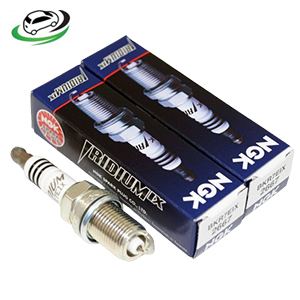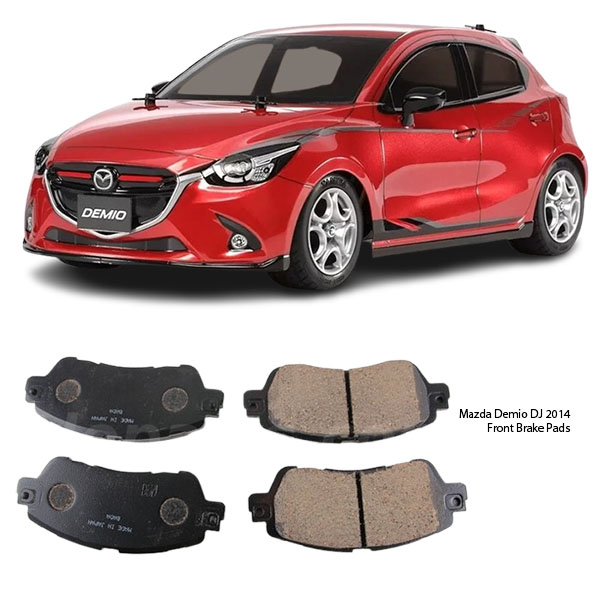-8%
Get Mazda Demio DJ 2014 Front Brake Pads Kit D3170 in Kenya
Braking isn’t just about stopping — it’s about control, safety, and precision. At the very heart of this system lies a hero you rarely see but always rely on: the Front Brake Pads Kit. Whether navigating tough terrain, sudden stops, or long journeys, brake pads are your first line of defense. 🦸♂️💥
Let’s dive into the world of front brake pads — what they are, how they work, and why keeping them in top shape is crucial to peace of mind and powerful performance.
1. What Are Front Brake Pads? 🧱💨
Front brake pads are friction components placed on both sides of a spinning metal disc (called a rotor). Their job? Create friction to slow down or stop motion when pressed against the rotor.
This contact transforms kinetic energy into heat — and that heat is what slows things down safely. 🔥🛑
A Front Brake Pads Kit typically includes:
-
🟫 A pair of high-friction pads (inner & outer)
-
🧷 Clips or shims to reduce noise and vibration
-
🧰 Sometimes wear sensors or hardware kits for easier fitting
Since the front wheels handle most of the stopping force, front brake pads often wear out faster than rear ones — making them a critical maintenance item.
2. The Anatomy of a Brake Pad 🧬🧱
Understanding the layers of a brake pad helps you appreciate its complexity and strength:
🔹 Friction Material – The working surface that contacts the rotor. It can be organic, semi-metallic, or ceramic.
🔹 Backing Plate – The steel base that supports the friction material.
🔹 Shim – A noise-reducing layer on the back of the pad.
🔹 Insulation Layer – Minimizes heat transfer to the brake system and reduces fade.
Each component plays a unique role in delivering quiet, smooth, and reliable stopping power. 🎯💡
3. How Do They Work? 🛠️🌀
When you apply the brakes, a hydraulic or electronic signal pushes the brake caliper to clamp the pads against the spinning rotor/disc. The resulting friction slows the wheel, bringing the machine to a halt.
Think of it like this:
👉 Pressure applied
👉 Pads clamp down
👉 Friction builds
👉 Energy turns to heat
👉 Motion slows to a stop
All of this happens within seconds — yet must be smooth, balanced, and reliable every single time. ⏱️⚡
4. Types of Brake Pad Materials 🧪🧱
Different brake pad materials offer different strengths depending on the application. Here’s the lowdown:
🪵 Organic (Non-Asbestos Organic – NAO)
-
Soft and quiet
-
Great for everyday use
-
Less dust, but shorter lifespan
⚙️ Semi-Metallic
-
Made of metal fibers, graphite, and resin
-
Excellent heat resistance and durability
-
Can be noisier but highly effective under pressure
🧊 Ceramic
-
Made with fine ceramic fibers and filler
-
Long-lasting, ultra-quiet, and low dust
-
Stable performance across temperatures
Each type is engineered to match different needs — whether you’re chasing longevity, silence, or heavy-duty performance. 🔍🔧
5. Signs It’s Time to Replace Your Pads 🕵️♂️⚠️
Brake pads naturally wear down over time. Here are the warning signs to watch for:
🚩 Squeaking or squealing noises
🚩 Grinding sound (metal-on-metal)
🚩 Reduced braking responsiveness
🚩 Vibration during stopping
🚩 Increased stopping distance
🚩 Warning light on dashboard
🚩 Visual inspection shows thin pads (less than 3mm)
Ignoring these signs can lead to rotor damage, system failure, or unsafe conditions. Don’t wait till it’s too late — staying proactive saves more than just parts. ⏳🛡️
6. Benefits of a Fresh Front Brake Pads Kit 💎✨
Swapping in a new set of front brake pads brings immediate advantages:
✅ Improved stopping power
✅ Smoother, quieter braking
✅ Longer life for rotors and calipers
✅ Increased safety in emergencies
✅ More consistent performance in wet, dry, or downhill conditions
And let’s be honest — nothing beats the confidence of responsive, smooth brakes in every situation. 😌👏
7. Installation Tips & Best Practices 🔧📏
If you’re planning to replace or inspect the front brake pads yourself (or with your trusted technician), keep these tips in mind:
🔸 Always replace in pairs – Change both front pads together for balance.
🔸 Inspect rotors – Worn or warped rotors should be resurfaced or replaced.
🔸 Use proper grease – Apply to shims and contact points to reduce noise.
🔸 Check calipers – Ensure they’re moving freely and not seized.
🔸 Break-in (bedding) – Perform a few controlled stops to let pads seat properly.
🛠️ Pro tip: A professional install ensures proper torque, safety checks, and efficient performance — and often takes less than an hour.
8. Choosing the Right Kit 🛒🎯
Not all pads are created equal. When selecting a front brake pads kit, consider:
✔️ Material type – Choose based on your performance needs
✔️ OEM vs Aftermarket – Both can be high-quality if sourced right
✔️ Inclusions – Look for shims, clips, sensors
✔️ Compatibility – Confirm fit for your model
✔️ Brand reputation – Trusted brands mean reliable quality
Choosing the right kit isn’t just about performance — it’s about long-term savings, safety, and stress-free operation. 🧠🔐
9. The Environmental Angle 🌍♻️
Modern brake pads are becoming more eco-conscious:
🌱 Copper-free options reduce pollution
♻️ Recyclable materials make disposal greener
🌾 Low-dust ceramics mean cleaner wheels and cleaner air
Protecting yourself and the environment — now that’s what we call a win-win. 💚🌤️
10. Final Thoughts: Your Everyday Hero in Every Stop 🛡️🛑
The Front Brake Pads Kit isn’t flashy, and it doesn’t brag — but it’s working every second, every time you need to slow down, turn, or stop.
It’s what makes the difference between calm control and chaos. Between safety and stress. And while it might seem like just another maintenance item, it’s really a guardian of peace, performance, and protection.
So next time you feel that smooth stop, that quiet confidence at your fingertips, remember — it’s the result of precision-engineered friction, perfectly placed and ready at all times.
Follow us on Facebook for more parts.



